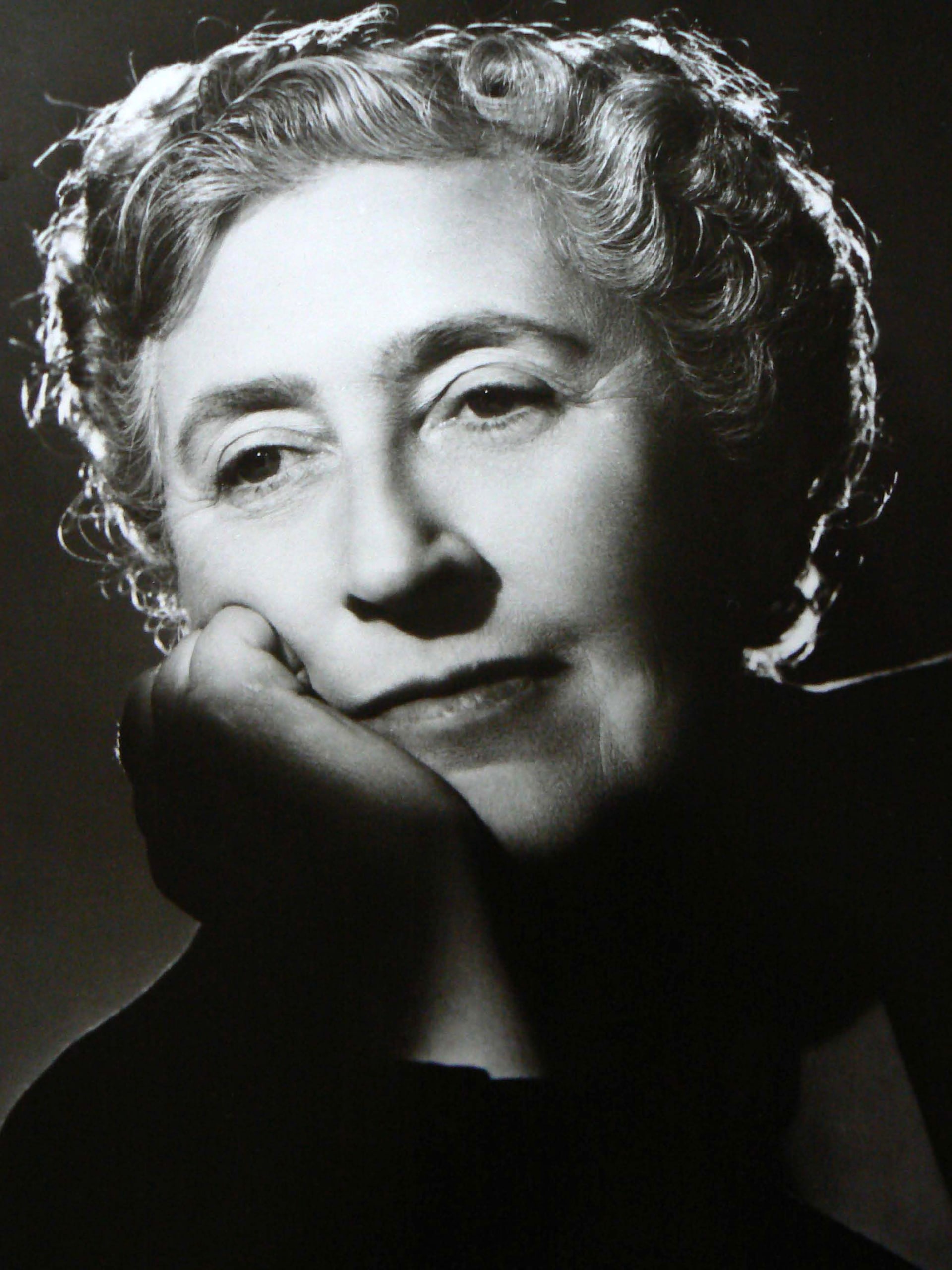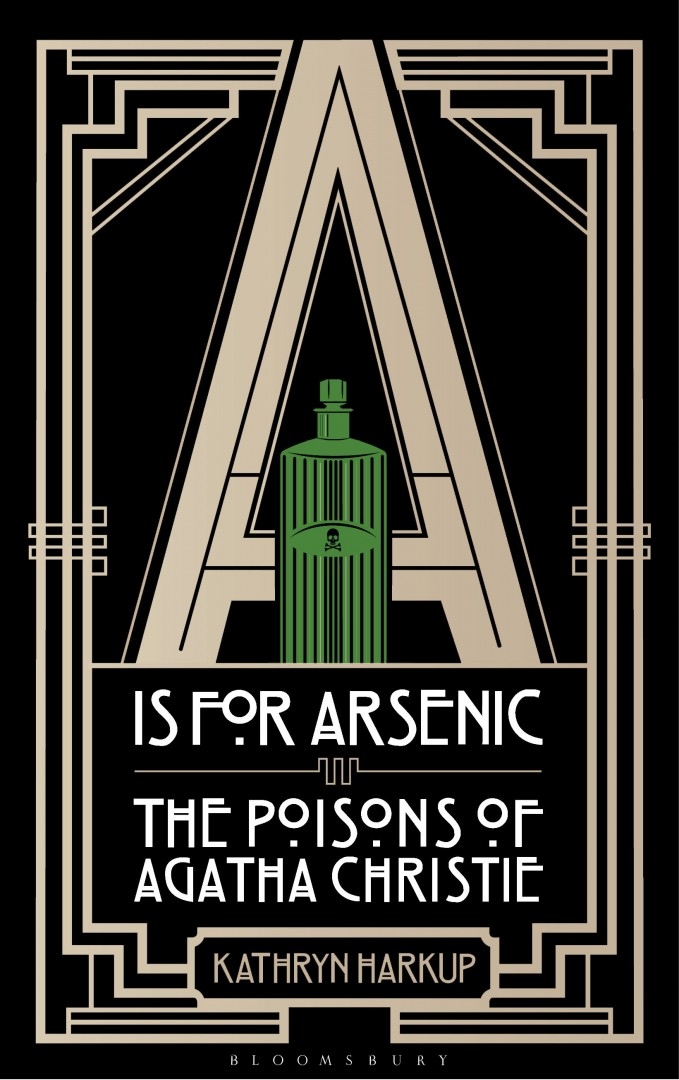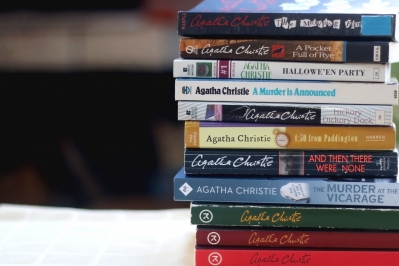
“Winston, if you were my husband, I would flavour your tea with poison.”
“Madam. If I were your husband, I would drink it.”
Lady Nancy Astor, the first female member of parliament and Winston Churchill (Chapter Header)
Queen of Crime, Dame Agatha Christie (1890-1976), was a prolific writer and the author of 66 novels as well as short story collections and the world’s longest-running play, The Mousetrap. The popularity of her books has been outpaced by only the Bible and Shakespeare; her various works have sold over a billion copies in the English language and a billion more in translation.
 Next month, as part of IF Oxford, and to coincide with several performances of The Mirror Crack’d at the Oxford Playhouse, Christie and her many mysteries come under the spotlight as chemist and author Kathryn Harkup talks about Agatha Christie; the poisons scattered through her stories; and her own book A is for Arsenic: the Poisons of Agatha Christie. Christie was, she begins, a great “teller of tales, entertainer ,and a poser of seemingly insoluble puzzles. Her detective stories repeatedly demonstrate that she was a master of misdirection.”
Next month, as part of IF Oxford, and to coincide with several performances of The Mirror Crack’d at the Oxford Playhouse, Christie and her many mysteries come under the spotlight as chemist and author Kathryn Harkup talks about Agatha Christie; the poisons scattered through her stories; and her own book A is for Arsenic: the Poisons of Agatha Christie. Christie was, she begins, a great “teller of tales, entertainer ,and a poser of seemingly insoluble puzzles. Her detective stories repeatedly demonstrate that she was a master of misdirection.”
From the age of 40, Agatha Christie lived and wrote from a magnificent Thames-side house on the edge of Wallingford. Prior to this, however, in her twenties Christie had qualified as an apothecary’s apprentice, working in a pharmacy where poisons and dangerous drugs were weighed and dispensed. As she began to write, Christie drew on her detailed knowledge of these compounds to develop many of her plots. When her first novel, The Mysterious Affair at Styles was finally published in 1920, she was delighted to be praised by The Pharmaceutical Journal for the accuracy of her writing concerning the strychnine used to poison the victim. It was a level of medical accuracy usually unseen in popular fiction – just because it's a story doesn't mean it's all made-up.
Agatha Christie revelled in the use of poison to kill off unfortunate victims in her books, using it more than any other murder method, with the poison itself often being a central part of the novel. In A is for Arsenic, Harkup investigates the poisons used by the murderer in fourteen classic mysteries considering how Christie’s choice of deadly substances was far from random. The characteristics of each provided vital clues to the discovery of the murderer: whether that’s belladona (a deadly poison otherwise known as deadly nightshade) or cyanide – which can be found in apple pips, begging the question, how many apples would you have to eat to poison yourself? Nicotine, opium, ricin and digitalis make appearances, too.
Poison by poison, Harkup looks at the effect of certain chemicals and why – and when – they kill. Christie’s work shows that dramas which portray victims swallowing a mouthful of tainted food, choking a little and then dying within moments are actually far from the truth. The effects of poisoning are often both slow and grim, yet the book is pitched just right so there’s nothing too grizzly within the pages. Nor are there any spoilers, so you can pick up any of Christie’s novels having read A is for Arsenic and still find yourself wrestling to solve the murder within.
 Harkup’s book is also packed with wide ranging snippets of information; from folklore and religion to the social history of medicine and Socrates – for example in the chapter on arsenic, we learn that Napoleon Bonaparte died in 1821 having been very unwell with stomach pains for several months on the tropical island of St Helena in the South Atlantic Ocean. Rumours abounded – had he been poisoned? In the nineteenth century there was no way of knowing, but by the 1960s (when samples of his hair were analysed) they were found to have an usually high concentration of arsenic, of which charcoal is an unlikely antidote. Rather than having been administered by a murderer, though, there is a suggestion that it was an arsenic-rich compound the mould in the wallpaper that finished him off…
Harkup’s book is also packed with wide ranging snippets of information; from folklore and religion to the social history of medicine and Socrates – for example in the chapter on arsenic, we learn that Napoleon Bonaparte died in 1821 having been very unwell with stomach pains for several months on the tropical island of St Helena in the South Atlantic Ocean. Rumours abounded – had he been poisoned? In the nineteenth century there was no way of knowing, but by the 1960s (when samples of his hair were analysed) they were found to have an usually high concentration of arsenic, of which charcoal is an unlikely antidote. Rather than having been administered by a murderer, though, there is a suggestion that it was an arsenic-rich compound the mould in the wallpaper that finished him off…
Arsenic, interestingly, was also used in small amounts as a beauty treatment in nineteenth century eastern Europe: men who consumed it looked stronger whilst women gained curves and a peaches-and-cream complexion as the poison killed off any bacteria causing spots and blemishes. However, it would also polish off those who consumed it regularly, and the cumulative effect of the arsenic in the body (as well as death) was that it kept corpses well preserved. Cadavers exhumed several years later were found to have decomposed relatively little, giving rise to vampire rumours.
Throughout the chapters, Harkup also describes real life cases pre-dating, and from the time Christie wrote her novels, such as that of Dr Crippen which may have inspired Christie. She also draws on more recent infamous cases, including those of Harold Shipman, alongside a consideration of the feasibility of obtaining, administering and detecting each of her chosen poisons, both then and now.
Please note, however, this is not a ‘how to’ manual for the murderously-inclined: instead it is a truly fascinating read. Highly recommended for anyone who loves detective fiction and puzzling out the mechanisms of death in Agatha Christie tales, for those with any interest in the workings of the body and for those who simply enjoy unusual facts to roll out at the dinner table.
Weapon of choice: Agatha Christie and poisons: Oxford Playhouse, Friday 14 October, 5pm.








